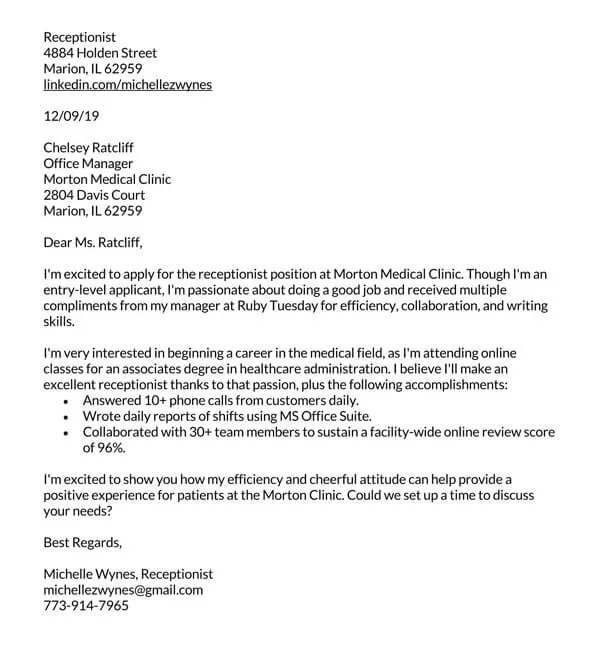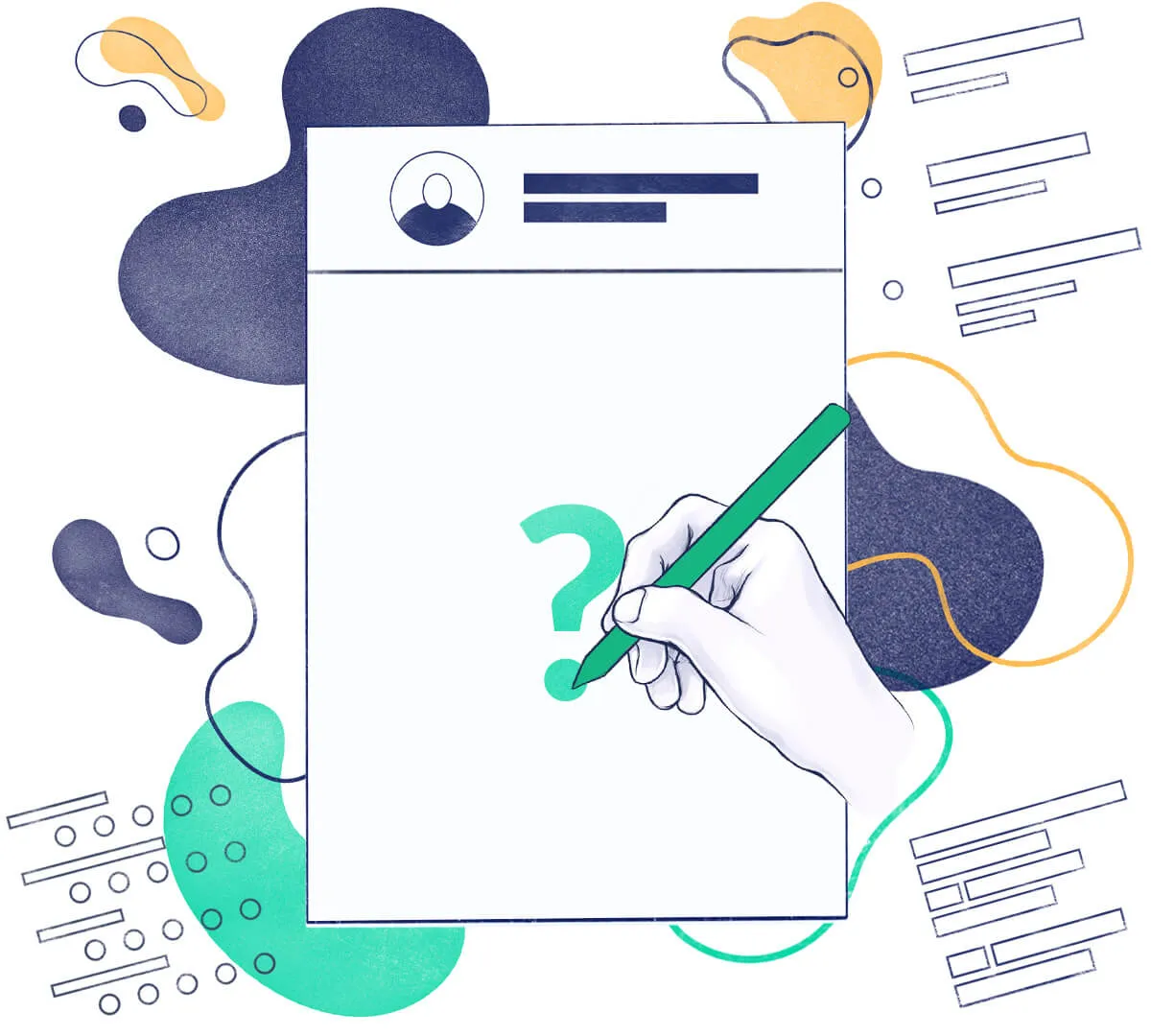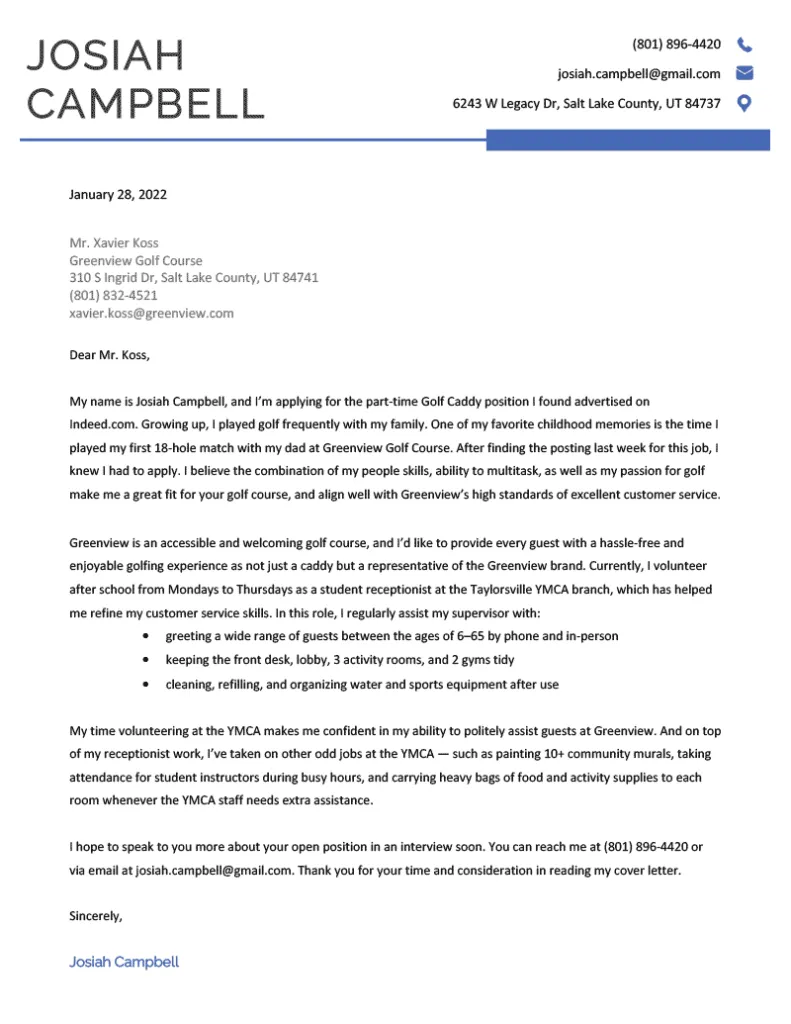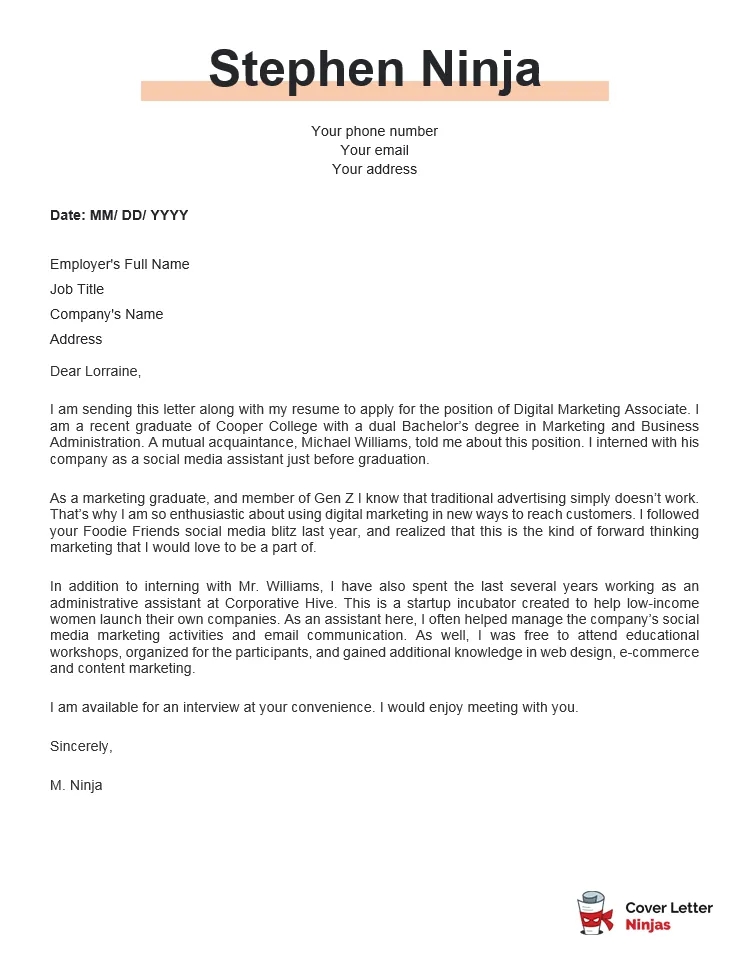Why Cover Letters Matter Even Without Experience
In the competitive job market, a well-crafted cover letter can be your secret weapon, even when you lack direct work experience. While your resume provides a factual overview of your qualifications, the cover letter is your chance to tell a story, to connect with the hiring manager on a personal level, and to demonstrate your passion for the role. It’s an opportunity to highlight your potential and to showcase why you’re the perfect fit, despite the absence of a lengthy employment history. A cover letter provides context and allows you to bridge the gap between what you’ve done and what you can do. It’s your chance to convince the reader that you are a valuable asset.
Highlighting Transferable Skills
When you lack traditional work experience, focusing on transferable skills is crucial. These are the skills you’ve developed in other areas of your life, such as volunteer work, academic projects, extracurricular activities, or personal endeavors, that can be applied to the job. Employers value these skills as they indicate your ability to adapt, learn quickly, and contribute effectively. Identifying these skills and demonstrating how they align with the job requirements is key to writing a compelling cover letter that captures the attention of the hiring manager.
Identifying Your Transferable Skills

Begin by making a list of all the skills you possess. Think about every experience, regardless of whether it was paid or unpaid. Consider the roles you played, the tasks you performed, and the challenges you overcame. Skills to consider include communication, problem-solving, teamwork, time management, leadership, organization, and adaptability. For instance, if you volunteered as a treasurer for a club, you can highlight your organizational and financial skills. If you managed a group project, you can emphasize your leadership and project management capabilities. The key is to look beyond the surface and identify the skills you’ve honed through various activities.
Showcasing Soft Skills
Soft skills are personal attributes that enable you to interact effectively with other people. They are increasingly valued by employers because they are difficult to teach and are crucial for workplace success. Examples include communication, interpersonal skills, teamwork, problem-solving, and work ethic. When showcasing soft skills, provide specific examples of how you have demonstrated them. For example, instead of saying ‘I have strong communication skills,’ you could say, ‘In my role as a student representative, I effectively communicated student concerns to faculty, resulting in…’ This approach provides concrete evidence of your abilities.
Quantifying Achievements
Whenever possible, quantify your achievements. Numbers add credibility to your claims and make your accomplishments more impactful. For example, instead of saying ‘I improved the club’s social media presence,’ you could say ‘I increased the club’s social media followers by 30% in six months.’ Quantifiable results provide clear evidence of your impact and demonstrate your ability to achieve results. Use metrics to illustrate the impact of your skills and the value you bring to the table. Think about how your actions benefited a project or organization, and try to express those benefits in numbers.
Formatting and Structure for No-Experience Cover Letters

A well-structured cover letter is easy to read and visually appealing. Formatting plays a critical role in conveying your professionalism and attention to detail. Choose a clean, readable font such as Times New Roman, Arial, or Calibri, with a font size between 10 and 12 points. Use consistent formatting throughout the document, including the use of clear headings, bullet points, and sufficient white space to make it visually appealing. Proper formatting enhances readability and keeps the reader engaged, increasing the chances of your cover letter making a positive impression.
Contact Information and Header
Start with your contact information at the top, including your name, address, phone number, and email address. If applying online, make sure your email address is professional. Include the date and the hiring manager’s name and title if available, along with the company’s address. This section sets the tone and provides the necessary information for the employer to contact you. Ensure the information is accurate and up-to-date to facilitate prompt communication. Be mindful of the layout to keep this section concise and easy to find.
Opening Paragraph Grab Their Attention
Your opening paragraph is your first and often only chance to make a strong impression. Start with a hook that grabs the reader’s attention. You might express your enthusiasm for the role, mention how you found out about the opportunity, or briefly introduce your key qualifications. Avoid generic opening lines such as ‘I am writing to express my interest.’ Instead, focus on conveying your genuine interest and excitement. For instance, you might start by mentioning something specific that attracted you to the company or role. The goal is to immediately capture the reader’s interest.
Body Paragraphs Showcasing Your Value

The body paragraphs are where you demonstrate your skills and qualifications. Use this space to explain why you are a good fit for the job, even without experience. Focus on your transferable skills and provide specific examples of how you’ve utilized those skills in other settings. Highlight your accomplishments and quantify them whenever possible. Tailor your content to the specific requirements of the job description. Show them why you would be a valuable asset. Each paragraph should build on the previous one to make a compelling case for your candidacy.
Tailoring to the Specific Job
Each cover letter should be customized to the specific job you are applying for. Carefully review the job description and identify the key skills and qualifications the employer is seeking. Then, tailor your cover letter to highlight the skills and experiences that align with those requirements. Use keywords from the job description and provide examples to demonstrate how you possess those skills. Generic cover letters are easily identified and often discarded. Show the hiring manager that you have taken the time to understand their needs and that you are a strong match for the role.
Demonstrating Enthusiasm
Show genuine enthusiasm for the role and the company. Express your interest in the work and the organization’s mission, and demonstrate your understanding of the company’s values and goals. This can be done by referencing the company’s recent achievements or the work of the team you are applying to join. Enthusiasm can be conveyed through your tone and language choices, using strong verbs and phrases that convey your excitement. Be passionate about the opportunity, and let your enthusiasm shine through in your writing.
Call to Action and Closing

In your closing paragraph, restate your interest in the role and thank the hiring manager for their time and consideration. Include a call to action, such as expressing your availability for an interview. Keep it concise and professional. Reiterate your enthusiasm for the opportunity and express your confidence in your ability to contribute. End with a formal closing, such as ‘Sincerely’ or ‘Best regards,’ followed by your name. Make sure to proofread your letter to ensure that there are no errors.
Proofreading and Editing for Perfection
Proofreading is critical. Errors can undermine your credibility and damage your chances of getting an interview. Before submitting your cover letter, carefully review it for grammar, spelling, punctuation, and formatting errors. Use a spell checker and grammar checker, but also read the letter aloud to catch any mistakes your software might miss. Ask a friend, family member, or career counselor to review your cover letter for feedback. A fresh pair of eyes can often catch errors you might have missed. Make sure your cover letter is perfect before sending it, as it’s often the first impression you make.
In conclusion, writing a compelling cover letter with no experience is entirely possible. By focusing on transferable skills, providing specific examples, tailoring your letter to each job, and demonstrating enthusiasm, you can make a strong case for your candidacy. A well-crafted cover letter can help you stand out from the competition and land your first job. So, take the time to craft a cover letter that showcases your potential and highlights why you are the ideal fit. With preparation, you can write a great cover letter.
